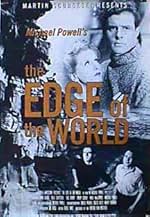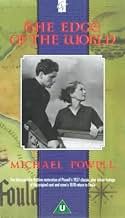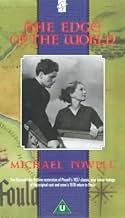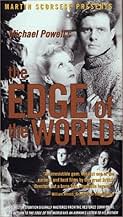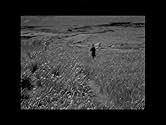CALIFICACIÓN DE IMDb
7.3/10
2.3 k
TU CALIFICACIÓN
La forma de vida está desapareciendo en el puerto pesquero de una isla de las Hébridas Exteriores, pero algunos de los habitantes se resisten a evacuar al continente.La forma de vida está desapareciendo en el puerto pesquero de una isla de las Hébridas Exteriores, pero algunos de los habitantes se resisten a evacuar al continente.La forma de vida está desapareciendo en el puerto pesquero de una isla de las Hébridas Exteriores, pero algunos de los habitantes se resisten a evacuar al continente.
- Dirección
- Guionistas
- Elenco
- Premios
- 1 premio ganado y 1 nominación en total
Niall MacGinnis
- The Gray Family: Andrew, His Son
- (as Niall Macginnis)
James Garrioch
- Doctor Attending Ruth's Baby in Lerwick
- (sin créditos)
Andy Gear
- Villager in Evacuation
- (sin créditos)
Mima Gear
- Villager in Evacuation
- (sin créditos)
Wullie Gear
- Fiddler at Hirta Reel
- (sin créditos)
Aggie Jean Gray
- Member of the Congregation
- (sin créditos)
Agnes 'Nannie' Gray
- Member of the Congregation
- (sin créditos)
Edith Gray
- Member of the Congregation
- (sin créditos)
James Andrew Gray
- Member of the Congregation
- (sin créditos)
Jean 'Jeannie' Gray
- Member of the Congregation
- (sin créditos)
- Dirección
- Guionistas
- Todo el elenco y el equipo
- Producción, taquilla y más en IMDbPro
Opiniones destacadas
This early effort by director Michael Powell is simply a stunning visual treat. Shot on location on one of the British isles,the visuals are both dramatic and beautiful.What amazed me was how different this movie was from others I've seen from the same period.It seemed so modern in the way of storytelling. The basic story of the film is quite predictable but the actors commitment heightens the drama's impact. John Laurie is the standout in the cast.But what lingers is the powerful depiction of the harsh life on these isles,constantly battling nature's forces.This movie is a cherished record of a way of life that now has almost completely disappeared. To fans of Michael Powell this is a must-see, and I recommend this amazing film to everybody.
If I had to name one of my favourite film directors, a few always come to mind, and they always include Michael Powell. He has made some of the (for me) most fascinating, thrilling, strange, intriguing and often exhilarating movies ever. He has made about 60 films in about 40 years and plenty of them would easily fit into my all time favourite top-10 films: The Red Shoes, Black Narcissus, The Life and Death of Colonel Blimp, Peeping Tom, Gone To Earth, A Canterbury Tale, 49th Parallel, One of Our Aircraft is Missing, A Matter of Life and Death, I Know Where I'm Going, Contraband, A Spy in Black - I can recommend them all as essential viewing if you are interested in English cinema of the 1940s and 1950s. Now the Arts Channel (in New Zealand) decided to screen one I hadn't seen before, The Edge of the World, from 1937. A tragic and powerful tale of an isolated island off the coast of Scotland (in Roman times known as Ultima Thule, the island of Foula standing in for St Kilda) affected by diminishing local resources of fuel and manpower, causing emigration, economic, social and environmental decline. It was fascinating and moving to see the stories of local families intertwined with the larger social and economic issues driving change. A constant recurrence of a cinematic theme throughout the film was gravity, which of course pulls everything down: people and sheep falling off cliffs, the pull of the wider world out there affecting the economic base of the island, fishing, livestock and crofting. The camera angles are fascinating throughout as every scene is filmed either from a upward or downward position, emphasising the will of men to fight for what they want and believe in, or being looked on by the camera acting as mother nature overwhelming the actors by the majestic cliffs, pounding seas and constant winds. You'd wish there could have been another outcome for the people involved but in the end it seems it's not possible to live at the edge of the world: you either choose to leave or die on the island.
Michael Powell is best known for the films he made with Emeric Pressburger under the brand name "The Archers", but "The Edge of the World" from 1937 is a solo project, predating his partnership with Pressburger. It was inspired by the evacuation of the remote Scottish archipelago of St Kilda in 1930. Here the island is named "Hirta", which is the same name as that of the main island of the St Kilda group, but it is relocated from the Hebrides to the Orkneys or Shetlands. (Permission to film on St Kilda itself was refused, so filming actually took place on Foula in the Shetlands, although that island was, and remains to this day, inhabited).
A wealthy young couple, sailing around Scotland by yacht, arrive on the island where they discover abandoned cottages but no human inhabitants. They ask Andrew Gray, the skipper of their yacht and himself a native of the island, what happened, and he explains that the island has been deserted for ten years. He then tells them the story of how the population came to leave. The islanders were divided among themselves; some, including Andrew himself, wanted to stay whereas others, such as his close friend Robbie Manson, wanted to leave. Even families were split; Andrew's father James sided with Robbie, whereas Robbie's father Peter and his sister Ruth (who was also Andrew's sweetheart) were both among those determined to stay.
The story told here is partly based upon the true story of the evacuation of St Kilda and is partly fictitious. As on the real St Kilda, the main factor which is drawing people away from the fictitious island of "Hirta" is the greater employment opportunities offered to young people on the mainland. There is also the fact that there are no medical facilities on the island. The people of Hirta are also concerned that competition from commercial trawlers is damaging the local fishing industry. (This was not a factor on the real St Kilda, where the rough and perilous seas meant that the local people did little fishing). As the younger generation gradually leave, this makes it more difficult for those remaining to follow their traditional way of life which relies on strong, fit young people to help with the fishing and crofting and to gather sea birds' eggs from the cliffs. (This was an important source of protein in their diet).
Powell, born in Canterbury, may have been a native of southern England, but had a deep love of the Scottish highlands and islands; two of his later films with Pressburger, "The Spy in Black" and "I Know Where I'm Going!" were also set in the area. "The Edge of the World" can be seen as his tribute to the way of life of the local people, a life which Powell and his cast and crew shared for several months while on Foula. (No air service or regular ferry existed in 1937, meaning that they had to stay on the island for the whole length of the shoot).
While "The Edge of the World" tells a fictional story, it has a documentary feel to it, reminiscent of the documentary shorts such as "The Islanders" which were being produced by the GPO Film Unit around the same time. At this period life on remote islands was hard and lonely; the islanders of Foula, like those of St Kilda, had no gas, electricity or running water. They had never seen a car, an aircraft or even a bicycle. There were no radios and no postal service; their only way of communicating with the outside world was to launch a letter into the sea in a small wooden vessel, hoping it would be picked up by a passing ship. (They make use of this method during the film). The characters in the film refer to the mainland as "Scotland", as through Scotland were somewhere foreign, not the country where they live.
Powell shows us not only the hardships and dangers of their life but also their simple religious faith, their democratic ways (all decisions of importance are taken by an island Parliament) and their independent spirit. He also captures, in some striking black- and-white photography, the austere natural beauty of the island. The film may not have the complexity of some of his "Archers" films, but it has a beauty, a tragic power and a poetic simplicity which make it unusual in the annals of British film-making, matched in these respects perhaps only by Bryan Forbes' "Whistle Down the Wind". 9/10
A goof. The main story is said to have happened ten years ago, presumably in 1927, but the characters refer to the evacuation of St Kilda, which did not occur until 1930.
A wealthy young couple, sailing around Scotland by yacht, arrive on the island where they discover abandoned cottages but no human inhabitants. They ask Andrew Gray, the skipper of their yacht and himself a native of the island, what happened, and he explains that the island has been deserted for ten years. He then tells them the story of how the population came to leave. The islanders were divided among themselves; some, including Andrew himself, wanted to stay whereas others, such as his close friend Robbie Manson, wanted to leave. Even families were split; Andrew's father James sided with Robbie, whereas Robbie's father Peter and his sister Ruth (who was also Andrew's sweetheart) were both among those determined to stay.
The story told here is partly based upon the true story of the evacuation of St Kilda and is partly fictitious. As on the real St Kilda, the main factor which is drawing people away from the fictitious island of "Hirta" is the greater employment opportunities offered to young people on the mainland. There is also the fact that there are no medical facilities on the island. The people of Hirta are also concerned that competition from commercial trawlers is damaging the local fishing industry. (This was not a factor on the real St Kilda, where the rough and perilous seas meant that the local people did little fishing). As the younger generation gradually leave, this makes it more difficult for those remaining to follow their traditional way of life which relies on strong, fit young people to help with the fishing and crofting and to gather sea birds' eggs from the cliffs. (This was an important source of protein in their diet).
Powell, born in Canterbury, may have been a native of southern England, but had a deep love of the Scottish highlands and islands; two of his later films with Pressburger, "The Spy in Black" and "I Know Where I'm Going!" were also set in the area. "The Edge of the World" can be seen as his tribute to the way of life of the local people, a life which Powell and his cast and crew shared for several months while on Foula. (No air service or regular ferry existed in 1937, meaning that they had to stay on the island for the whole length of the shoot).
While "The Edge of the World" tells a fictional story, it has a documentary feel to it, reminiscent of the documentary shorts such as "The Islanders" which were being produced by the GPO Film Unit around the same time. At this period life on remote islands was hard and lonely; the islanders of Foula, like those of St Kilda, had no gas, electricity or running water. They had never seen a car, an aircraft or even a bicycle. There were no radios and no postal service; their only way of communicating with the outside world was to launch a letter into the sea in a small wooden vessel, hoping it would be picked up by a passing ship. (They make use of this method during the film). The characters in the film refer to the mainland as "Scotland", as through Scotland were somewhere foreign, not the country where they live.
Powell shows us not only the hardships and dangers of their life but also their simple religious faith, their democratic ways (all decisions of importance are taken by an island Parliament) and their independent spirit. He also captures, in some striking black- and-white photography, the austere natural beauty of the island. The film may not have the complexity of some of his "Archers" films, but it has a beauty, a tragic power and a poetic simplicity which make it unusual in the annals of British film-making, matched in these respects perhaps only by Bryan Forbes' "Whistle Down the Wind". 9/10
A goof. The main story is said to have happened ten years ago, presumably in 1927, but the characters refer to the evacuation of St Kilda, which did not occur until 1930.
Odd little film directed by Michael Powell long before his huge success once teamed with Emeric Pressburger.
Subtitled "the death of an island," the film chronicles the dreary lives of island folk as seen in flashback by the former residents years after. Victims of the changing world, commercialized fishing, and isolation, the islanders finally pack it in and move to the mainland after the death of one young man and a near miss with a baby.
Set in an era before electricity and telephones the film shows just how isolated the people are on the various islands north of Scotland. Independent and stubborn, they cling to their rock even though they know the end is coming.
The story is slim: the young people are in crisis of whether to stay and keep the island going or go to the mainland and get good-paying jobs. The story shows us their lives on the island of Hirta (which means death) and the draw of the cities.
Almost shot in documentary form, Powell constantly shows us the majestic beauty of the sparse rock of island versus the drab lives of the people. Their lives are built around church, social interaction, and trying to keep going.
The acting is minimal with a few familiar faces. John Laurie is the hard father who sees his son (Eric Berry) die in a stupid accident while climbing the face of sea rock. Belle Chrystall is Ruth and Niall MacGinnes is Robbie. Finlay Currie co-stars.
The island scenery is just gorgeous and Powell has a good eye for the incredible backdrops of sea and rock and waving grasses.
Subtitled "the death of an island," the film chronicles the dreary lives of island folk as seen in flashback by the former residents years after. Victims of the changing world, commercialized fishing, and isolation, the islanders finally pack it in and move to the mainland after the death of one young man and a near miss with a baby.
Set in an era before electricity and telephones the film shows just how isolated the people are on the various islands north of Scotland. Independent and stubborn, they cling to their rock even though they know the end is coming.
The story is slim: the young people are in crisis of whether to stay and keep the island going or go to the mainland and get good-paying jobs. The story shows us their lives on the island of Hirta (which means death) and the draw of the cities.
Almost shot in documentary form, Powell constantly shows us the majestic beauty of the sparse rock of island versus the drab lives of the people. Their lives are built around church, social interaction, and trying to keep going.
The acting is minimal with a few familiar faces. John Laurie is the hard father who sees his son (Eric Berry) die in a stupid accident while climbing the face of sea rock. Belle Chrystall is Ruth and Niall MacGinnes is Robbie. Finlay Currie co-stars.
The island scenery is just gorgeous and Powell has a good eye for the incredible backdrops of sea and rock and waving grasses.
A new version was reportedly released in 1978 ,featuring a color sequence where the director and the actors-survivors went on a pilgrimage to Foula.It was called "return to the edge of the world" .This is not the version I saw and it seems that none of the other users could see it either.It's really a pity.
Powell is my favorite English director.He's the only one who 's got a sense of mystery.His pictures are art,poetry in motion.He films the sea (a harsh mistress) and the desolate landscapes in a dazzling way.His influence on David Lean ("Ryan's daughter") is obvious.But I'm almost sure old wave French Jean Delannoy (not meant pejoratively) had this movie in mind when he made his own "Dieu a Besoin des Hommes" (a story in a remote Breton island ).And the almost documentary side of the movie predates Robert Bresson's asceticism.
Some called it melodramatic:on the contrary,Powell avoids its clichés; the unmarried mother became generally an outcast,most of all the French Marcel Pagnol films revolved around this subject.But Ruth's child is a new hope for the inhabitants.The sequence when they dance to a violin tune is the one really happy moment in the whole film.
The times are changing.The way of life their fathers used to know is coming to an end.Powell's movie gains an universal meaning :the situation he depicted happened (and is still happening) here there and everywhere.
Powell is my favorite English director.He's the only one who 's got a sense of mystery.His pictures are art,poetry in motion.He films the sea (a harsh mistress) and the desolate landscapes in a dazzling way.His influence on David Lean ("Ryan's daughter") is obvious.But I'm almost sure old wave French Jean Delannoy (not meant pejoratively) had this movie in mind when he made his own "Dieu a Besoin des Hommes" (a story in a remote Breton island ).And the almost documentary side of the movie predates Robert Bresson's asceticism.
Some called it melodramatic:on the contrary,Powell avoids its clichés; the unmarried mother became generally an outcast,most of all the French Marcel Pagnol films revolved around this subject.But Ruth's child is a new hope for the inhabitants.The sequence when they dance to a violin tune is the one really happy moment in the whole film.
The times are changing.The way of life their fathers used to know is coming to an end.Powell's movie gains an universal meaning :the situation he depicted happened (and is still happening) here there and everywhere.
¿Sabías que…?
- TriviaIn the scene of the race up the cliffs, the actors did their own climbing. According to director Michael Powell's book on the making of the film, Eric Berry in particular did some risky work indeed, especially in the shots of him clambering up the waterfall.
- ErroresThe wild Golden Eagle at the beginning has the falconer's jesses (leather straps) visible.
- Citas
The Gray Family: Andrew, His Son: Do you think I don't care about Robbie? Do you think I'd forget that he was your twin brother and my best friend?
- Créditos curiosos[before opening credits] The slow shadow of Death is falling on the outer isles of Scotland. [scrolls up] This is the story of one of them -- and all of them. When the Roman Fleet first sailed round Britain they saw from the Orkneys a distant island, like a blue haze across a hundred miles of sea. They called it - "ULTIMA THULE" [main title] THE EDGE OF THE WORLD
- ConexionesFeatured in Return to the Edge of the World (1978)
- Bandas sonorasChorus
(uncredited)
Composer unknown
Performed by The Glasgow Orpheus Choir
Conducted by Hugh S. Roberton
Selecciones populares
Inicia sesión para calificar y agrega a la lista de videos para obtener recomendaciones personalizadas
- How long is The Edge of the World?Con tecnología de Alexa
Detalles
Taquilla
- Presupuesto
- GBP 20,000 (estimado)
- Tiempo de ejecución1 hora 21 minutos
- Color
- Relación de aspecto
- 1.37 : 1
Contribuir a esta página
Sugiere una edición o agrega el contenido que falta

Principales brechas de datos
By what name was The Edge of the World (1937) officially released in India in English?
Responda
